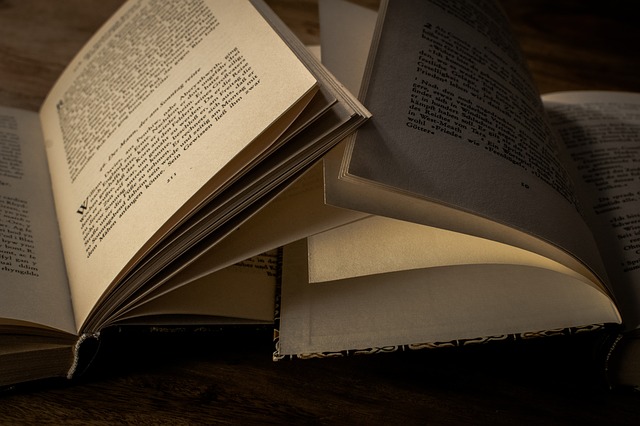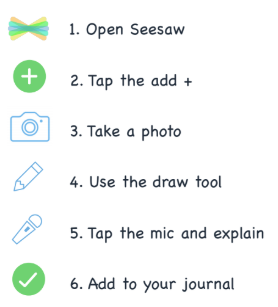
Writing Narratives For an Audience

Overview
Seesaw is a web-based and application platform where students can post pictures from the classroom, annotate, speak their mind, and create electronic portfolios that connect school and home. Parents are able to see student work as soon as it is posted.
In this activity, students write an informational piece of writing and read it to their audience on SeeSaw.
Learning Objectives
Students will:
- Be able to choose an opinion they have and write at least three reasons with details about that opinion.
Vocabulary
Vocabulary Words:
- Informational Piece of Writing: Informational writing is a type of nonfiction writing that conveys information about something, which means it is factual. Many examples of informational writing can be found in newspapers, almanacs, and reference books.
Pre-planning
To prepare for this lesson:
- Before the lesson, teachers must set up SeeSaw accounts for their classes and invite parents to join.
-
Please view the TEACHER video on using SeeSaw in the classroom.
-
Students should also know the basic features of SeeSaw.
-
Please view the following videos to decide how your students will access SeeSaw. Students can access it with email, a class code, or a QR code.
-
-
Here is a student video on how to use SeeSaw.
-
The SeeSaw app needs to be downloaded on student devices or bookmarked on computers.
-
Teachers will need journal paper or narrative writing graphic organizers available to students.
Note: SeeSaw has many other tutorials on their website and Help Center.
Accommodations
See the Accommodations Page and Charts on the 21things4students website in the Teacher Resources.
Steps
Directions for this activity:
-
The teacher begins by asking students “Who reads your writing?” Student answers will include people in the classroom and also their family at home if journals go home.
-
The teacher then asks, “what types of writing do we write?” Students should answer journal writing, stories, nonfiction, etc…
-
The teacher explains that today when students work on writing, they are going to write a narrative about a real or imagined event, post their writing to SeeSaw and read it aloud for their audience.
-
Teacher and students discuss narrative topics that they like to write about. Students may say:
-
When I got my pet
-
An “ouch” story
-
A special time with family
-
-
Next, students and teacher talk about reading a narrative text out loud to someone and how to help their reader understand their story. Students may say:
-
Read clearly.
-
Use voices for different characters.
-
Focus on a small moment in time, like going down a waterslide, not an event, like a week vacation.
-
-
Students create their writing on journal paper and add a picture to match. When finished, the students will upload their writing to SeeSaw.
-
In SeeSaw students press the “+” sign, then select the camera icon to take a photo of their writing.
-
Next, students tap the microphone and record themselves reading their writing aloud.
-
When finished, students select the green check to add it to their journal.
Here is a photo of the steps to add and explain a photo in SeeSaw:

Assessment Options
Different options for assessing the students:
- Observations
- Check for understanding
- Teachers can see what students have posted to their journal from the Teacher side of SeeSaw. They are able to leave feedback for students and intervene with any student who did not read their story or added more detail then they wrote about. The teacher can also talk about how their writing might help someone to continue the discussion about audience.
MITECS COMPETENCIES & ISTE STANDARDS
MITECS: Michigan adopted the "ISTE Standards for Students" called MITECS (Michigan Integrated Technology Competencies for Students) in 2018.
Creative Communicator
6d. Students publish or present content that customizes the message and medium for their intended audiences.
Devices and Resources
SeeSaw works on all devices, but works best on devices with a camera and microphone.
Websites:
Get Students Started on Seesaw: Sign in with a code
Narrative Writing Graphic Organizers
SeeSaw Tutorial for Teachers Updated 2022
CONTENT AREA RESOURCES
ELA
-
Students take more care when they know someone will be reading and reacting to their writing. Having a purpose to write helps motivate students to try hard on their work. Seesaw provides a platform for students to have a larger audience than the classroom walls.
-
CCSS.ELA-LITERACY.W.4.3
Write narratives to develop real or imagined experiences or events using effective technique, descriptive details, and clear event sequences.
Credits
This task card was created by Lacey Khon, KRESA, November 2018. Updated November 2023.


